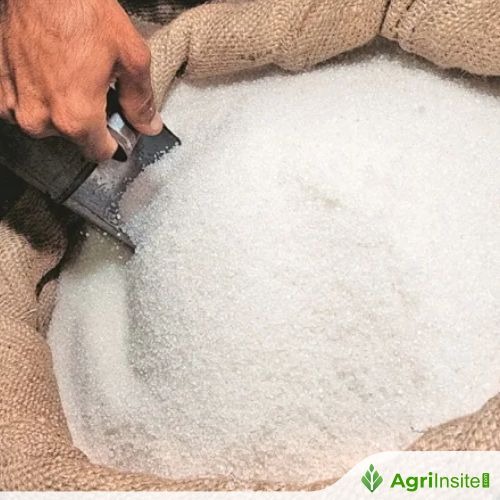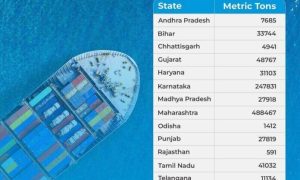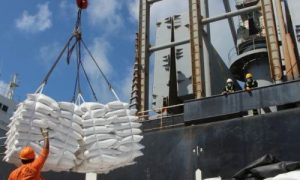Sugar production in Cuba falls to its lowest level in over 100 years

Cuba’s 2024-25 sugar harvest plunged below 150,000 tons—the lowest in over a century—less than half of last year’s output and far short of the 265,000-ton target. Chronic cane shortages, fuel and power crises, aging mills, and poor maintenance crippled production, forcing Cuba to rely on costly sugar imports.
Sugar production in Cuba fell below 150,000 tons in the 2024-2025 harvest, marking the lowest level in over a century and less than half of what was achieved in the previous campaign, according to the EFE agency citing official sources.
The result falls well short of the state plan of 265,000 tons and reflects the ongoing decline of a sector that has been the backbone of the national economy for decades. The limited availability of sugarcane, frequent blackouts, lack of fuel, and deteriorating infrastructure have contributed to this collapse.
Since May, it was already foreseen that production would fall below 200,000 metric tons. This figure marked a new historic low and confirmed the failure of the official plan. The downward trend has been ongoing for several years.https://d-1158657623470528700.ampproject.net/2507172035000/frame.html
In provinces like Villa Clara, sugar production has not met targets since 2019. This year, the mills Héctor Rodríguez and Quintín Bandera reported yields below 50% of what was planned, with low planting, a lack of seeds, and incomplete industrial repairs, in an environment characterized by improvisation.
The situation in Granma was not better: the harvest concluded with only 5,277 tons of sugar, far from the nearly 20,000 that were expected. The Enidio Díaz Machado mill was the last to process, failing to compensate for the low results of the other mills that operated at minimal capacities.
Camagüey, with a plan of 23,500 tons, produced only 4,000. The Carlos Manuel de Céspedes sugar mill, the only one operational in the province, lost 87% of its grinding time due to breakdowns, technical deficiencies, and shortages of supplies. Authorities acknowledged the seriousness of the outcome.
Guantánamo accumulated only 2,900 tons, 38% of the plan. The start was delayed by more than 40 days, and the Argeo Martínez mill operated with instability, despite the investments made. Production was even lower than the previous year.
In Las Tunas, the Antonio Guiteras sugar mill achieved only 16% of its plan due to shutdowns caused by a lack of basic resources. This was the worst historical campaign of the largest sugar mill in the country.
In Ciego de Ávila, the Primero de Enero sugar mill did not participate in the harvest due to an outstanding electricity bill that led to its shutdown. Workers reported forced relocations and delays in salary payments, amid an ongoing crisis with no institutional response.
The 2022-2023 sugar harvest closed with 350,000 tons of sugar, the worst result in 125 years, even lower than the levels of 1898. This campaign also fell short of the official plan and worsened the crisis in the sector.
In 2021, 792,000 tons were produced, only 66% of the plan, which already represented the worst performance since 1901. The authorities attributed the failure to issues with logistics, harvesting, and transportation.
Since 2002, when the government ordered the dismantling of over 100 plants, industrial capacity has drastically decreased. Today, the country is unable to meet its internal consumption—estimated between 600,000 and 700,000 tons annually—and again relies on imports to satisfy minimum demand.
The sugar industry, which for decades was a national pride and primary source of foreign currency, is undergoing a structural crisis that deepens year after year, with no clear signs of recovery.
Frequently Asked Questions about the Sugar Crisis in Cuba
Why has sugar production in Cuba declined so much?
The production of sugar in Cuba has fallen to its lowest level in over a century due to a combination of factors, such as the limited availability of sugarcane, constant blackouts, lack of fuel, and deterioration of infrastructure. These issues have led to the failure of the state production plan and reflect the ongoing decline of a sector that was the backbone of the national economy.
What are the consequences of the low sugar production in Cuba?
The low production of sugar in Cuba has several negative consequences. The country fails to meet its domestic consumption, which means it must import sugar to satisfy the minimum demand. Furthermore, the crisis in sugar production also impacts the rum industry, which relies on alcohol derived from Cuban sugarcane. This situation exacerbates the structural economic crisis of the country and jeopardizes sectors such as food, export, and industrial.
How has sugar production been affected in the different provinces of Cuba?
The sugar production in Cuba has been disastrous in several provinces. For example, Camagüey produced only 17% of its plan, Guantánamo 38%, and Las Tunas barely 16%. The provinces face issues such as delays in the harvest, shortages of resources, equipment breakdowns, and a lack of trained personnel. These difficulties are common across the country, reflecting a deep structural crisis in the Cuban sugar industry.
What role does the Cuban government play in the sugar crisis?
The Cuban government has been criticized for its inefficient management of the sugar industry. Since the fall of the Soviet Union, the sector has been in decline, and the authorities have not implemented an effective plan to reverse the situation. The government often attributes the crisis to the U.S. embargo, but there are also multiple internal issues such as mismanagement, lack of investment, and inadequate planning. This has resulted in Cuba, traditionally one of the leading sugar producers, relying on imports to meet its domestic demand.
To Read more about Sugar Industry continue reading Agriinsite.com
Source : Ciber Cuba













